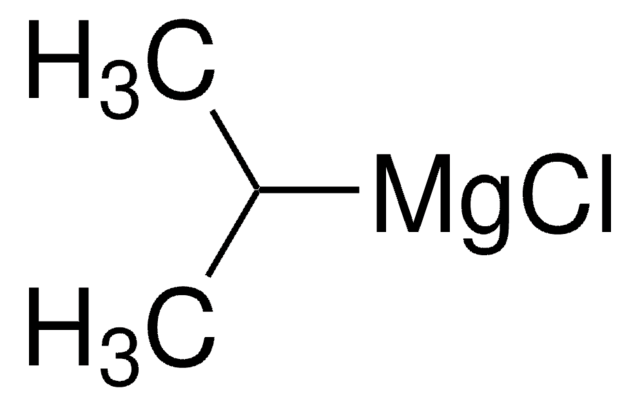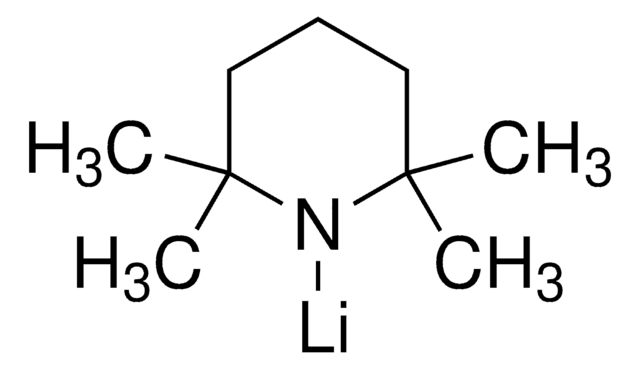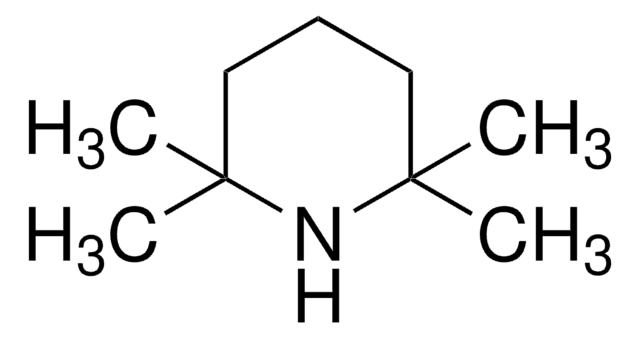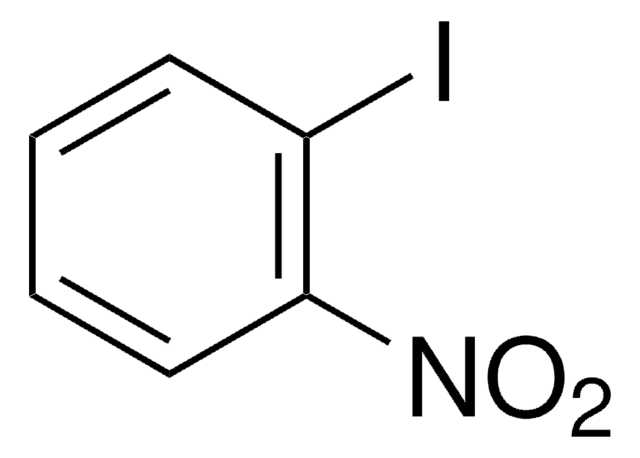697257
Copper(I) cyanide di(lithium chloride) complex solution
in anhydrous tetrahydrofuran
Sinonimo/i:
Copper(I) cyanide di(lithium chloride)
About This Item
Prodotti consigliati
Stato
liquid
Impiego in reazioni chimiche
core: copper
reagent type: catalyst
Concentrazione
in anhydrous tetrahydrofuran
Densità
0.999 g/mL at 25 °C
Stringa SMILE
[Li]Cl.[Li]Cl.[Cu]C#N
InChI
1S/CN.2ClH.Cu.2Li/c1-2;;;;;/h;2*1H;;;/q;;;;2*+1/p-2
QGXKBLXNBYNHBV-UHFFFAOYSA-L
Applicazioni
Avvertenze
Danger
Indicazioni di pericolo
Classi di pericolo
Acute Tox. 1 Dermal - Acute Tox. 2 Inhalation - Acute Tox. 2 Oral - Aquatic Acute 1 - Aquatic Chronic 1 - Carc. 2 - Eye Irrit. 2 - Flam. Liq. 2 - Skin Irrit. 2 - STOT SE 3
Organi bersaglio
Central nervous system, Respiratory system
Rischi supp
Codice della classe di stoccaggio
3 - Flammable liquids
Classe di pericolosità dell'acqua (WGK)
WGK 2
Punto d’infiammabilità (°F)
1.4 °F - closed cup - Solvent
Punto d’infiammabilità (°C)
-17 °C - closed cup - Solvent
Dispositivi di protezione individuale
Eyeshields, Faceshields, Gloves, type ABEK (EN14387) respirator filter
Scegli una delle versioni più recenti:
Possiedi già questo prodotto?
I documenti relativi ai prodotti acquistati recentemente sono disponibili nell’Archivio dei documenti.
I clienti hanno visto anche
Il team dei nostri ricercatori vanta grande esperienza in tutte le aree della ricerca quali Life Science, scienza dei materiali, sintesi chimica, cromatografia, discipline analitiche, ecc..
Contatta l'Assistenza Tecnica.














